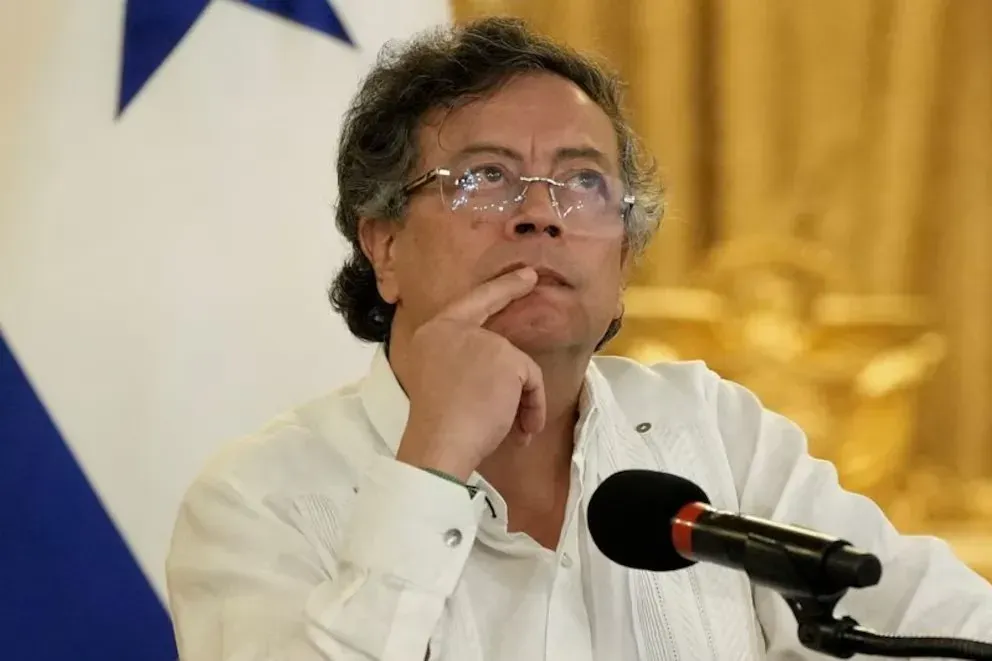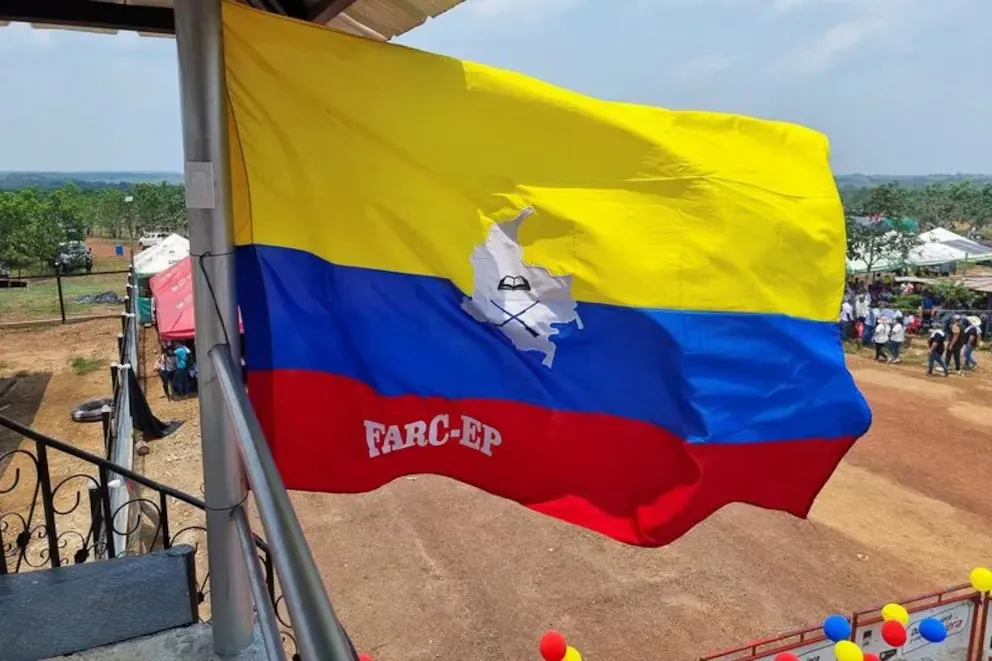Robert Evan Ellis for Poder & Dinero and FinGurú
In mid-May 2025, I had the opportunity to travel to Bogotá, Colombia, to give lectures at the Superior War School and at the Universidad Militar Nueva Granada, and interact with high-ranking officials from the security and defense sector about the challenges facing the country. This trip was particularly significant for me, as my work on security issues in Latin America since the late nineties has coincided with Colombia's transformation: from being a country with governance on the verge of collapse due to the twin scourge of drug trafficking and guerrilla violence, to becoming the biggest success story in security in the region, a key partner of United States and a security exporter to its neighbors.
The Dramatic Success of Colombia during that period makes the setbacks of the last decade even more tragic, driven by a failed agreement with the FARC, the socioeconomic shocks caused by the COVID-19 pandemic, and the disastrous efforts to achieve “total peace” by the current government of Gustavo Petro. My visit coincided with a wave of selective murders, dubbed “Plan Pistola,” referencing a strategy of assassinations as a terror tool used in the nineties by drug trafficker Pablo Escobar against the State. By May 2025, the Plan Pistola had claimed the lives of 27 police officers and security officials across the country. In recent months, there has also been a wave of grenade attacks in Bogotá.
Beyond these acts of “terrorism,” kidnapping has resurfaced as a threat in Colombia, with 131 cases reported in the first four months of 2025, evoking the dark times when Colombians feared leaving urban areas for fear of being kidnapped by guerrilla members setting up roadblocks in broad daylight on the outskirts of the capital and in other regions, a tactic known as “miraculous fishing,” hoping to capture wealthy citizens and demand a ransom.
Like in the nineties, Colombia is once again facing an explosion in drug production, which increased by 53% between 2023 and 2024, according to the United Nations Office on Drugs and Crime (UNODC). The revenues generated by this rapidly expanding illegal economy are corrupting Colombian institutions. At the same time, the country is besieged by a growing number of armed groups, whose diverse criminal activities have severely undermined citizen security, limited state control, and hindered economic activity in vast regions.
Colombia is also going through a situation of paralysis and political polarization, exacerbated by internal struggles and multiple corruption scandals involving President Petro and his movement “Pacto Histórico.” Internationally, the country suffers the consequences of significantly higher tariffs imposed on its products by United States, as well as severe sanctions for refusing to accept deportation flights with Colombian citizens. Several high-ranking Colombian officials I spoke with expressed concern over a possible “decertification” by the United States in the drug war, a decision that could lead to the devastating cessation of security support from Washington.
“My most significant and concerning impression following this visit is that this nation, with so much educational talent and creativity, is once again in a downward spiral, the bottom of which is not yet in sight.”

The Deterioration of Security in Colombia
The policies of the government of Gustavo Petro have reportedly accelerated the deterioration of the security situation in Colombia, a crisis that had been brewing since the peace agreements of 2016 with the Revolutionary Armed Forces of Colombia (FARC). These agreements, rejected by Colombians in a national plebiscite but later slightly modified and implemented by the government of Juan Manuel Santos without a new public consultation, caused two detrimental effects: first, they fostered a boom in coca production, which had been painstakingly reduced over two decades, especially after the state's halt of aerial fumigations in 2015 for environmental and health reasons. Upon implementing the agreement with the FARC, many Colombians believed that planting coca would lead to compensation from the state to remove it from production.
Meanwhile, the demobilization of the FARC, which on paper included their disarmament and subsequent dissolution as an armed force, in practice was incomplete and not definitive. The Colombian state was not in a position to prevent other groups from competing to control the territories that the FARC were abandoning. Some fronts of the FARC involved in illegal activities—the so-called “dissidents”—continued to operate, financing themselves through coca production, and were accompanied by other demobilized individuals who failed to reintegrate into the workforce or were dissatisfied with their situation post-agreement. Some leaders, like Iván Márquez and Jesús Santrich, initially joined the process but later abandoned it and returned to armed conflict under the banner of the “Second Marquetalia.” Other ex-combatants, either before or after formally demobilizing, joined the National Liberation Army (ELN) or organized armed groups (GAO), with the largest being the Urabeños, also known as the Gulf Clan.
To these problems, the state's failure to meet unrealistic promises of infrastructure and economic development in the areas where the FARC operated was added, as well as to provide transitional justice that satisfied both ex-combatants and their victims, to guarantee the security of the demobilized and community leaders against reprisals, or to facilitate effective political participation that met the expectations of former guerrillas.
There was never a true “peace” in Colombia after the agreements of 2016. What occurred, as had happened after the flawed agreements with paramilitary groups between 2003 and 2006, was an escalation of illicit activities and violence, as various criminal and ideological organizations—some weakened and others strengthened—embarked on new disputes for control of territories partially abandoned by the FARC.

As if the difficulties were not enough, the incentives to join armed groups or participate in illegal economies increased due to the negative economic and social impact of the COVID-19 pandemic, which also distracted the state security forces, imposing new tasks on them and reducing the resources available to combat armed groups. This crisis, along with the false sense of security created by the agreement of 2016, contributed to the election of former M-19 guerrilla, Gustavo Petro, as president of Colombia.
Petro's security strategy included the near-total suspension of forced coca crop eradication and actions against small producers. It also sought to extend the FARC peace agreements to almost all non-state armed actors, including ideologically based groups such as the FARC dissidents—among them the Joint Chief of Staff (EMC) and the Second Marquetalia—as well as more purely criminal actors like the Gulf Clan, who attempted to present themselves as a political group under the name of Colombian Gaitanista Self-Defense Forces (AGC), and even urban gangs.
Petro's approach led to simultaneous negotiations with nine distinct organizations and a succession of ceasefires that constantly varied to allow for talks. These ceasefires were nearly always broken due to violations by one of the sides, or due to the fragmentation of the groups between those willing to negotiate and those unwilling. For instance, negotiations with the FARC dissidents resulted in a division between talks with the EMC, led by Iván Mordisco, and the Jorge Briceño Block (Calarcá), led by Calarca Córdoba, which refused dialogue and has grown in number by continuing to fight.
In some regions, the state's commitments to one group have limited the actions of security forces, although other criminal groups not subject to those agreements continue to develop illicit or military activities in those areas.
To this, it must be added that upon taking power, Petro's government removed 52 generals from police and armed forces operations, promoting trusted officers to lead security institutions. In the process, many experienced leaders were forced to retire due to unproven allegations of human rights violations or other offenses.
The mass departure of commanders was accompanied by directives that severely restricted the actions of the armed forces, such as the prohibition of airstrikes in areas where minors might be present—something practically impossible to rule out.
The result of this combination of policies and decisions was a serious degradation of the operational capacity of security forces against armed groups.

Current Landscape of Crime and Insecurity in Colombia
As previously mentioned, Colombia remains the main source of cocaine produced in the region for US and Europe markets, although illegal mining and other illicit activities also pose a considerable problem. In 2024, Colombian authorities seized almost 280 metric tons of cocaine, more than any other country in the Americas.
Furthermore, the use of Ecuador's territory and ports to export cocaine produced in Colombia and conduct other operations has been the main driver of the unprecedented increase in violence by armed groups in that nation in recent years. In 2024, Ecuador ranked second in cocaine seizures in the hemisphere, with 252 metric tons confiscated.
Another concerning capability of criminal groups in Colombia is the use of narco-submarines and low-detection vessels to transport drugs. A significant part of the 240 sophisticated narco-submarines intercepted while preparing or conducting oceanic voyages was built or launched from facilities in Colombia, primarily on its Pacific coast.
Regarding armed groups, their motivations are both criminal and ideological, although their size and composition have varied. Between 2022 and 2024, their strength grew by 20%, and their current size is similar to what they had when the FARC began demobilizing in 2016.
Security experts in Colombia identify 17 major armed groups, although the number varies depending on the criteria used. Among them, the Gulf Clan (also known as the Urabeños or Colombian Gaitanista Self-Defense Forces, AGC) is the largest, with 7,015 members. It is followed by the ELN, with 6,012 members, including its semi-autonomous fronts. The FARC dissidence, Joint Chief of Staff (EMC), mainly comprised of the former Front 33, has 2,957 members. The Calarcá group, which emerged from a split from the EMC for refusing to negotiate with the government, currently has 2,170 members, and the Second Marquetalia, the smallest of the large groups, has 2,059 members.
The security situation in Colombia is characterized by multiple and interconnected conflicts, marked by specific criminal opportunities and diverse geographical realities.
Concerns about the political and security crisis in Colombia go beyond the tragedy it represents for its population. The country is a key provider of cocaine and other illicit drugs to both United States and Europe.
Its strategic location, between the Atlantic and Pacific Oceans, with influence in the Caribbean and direct connection between South America and Central America, makes it a key territory for the flow of migrants from Venezuela, Ecuador, and the Caribbean to the United States through the Darién Gap, as well as being a vital point for the security of the Panama Canal. These strategic considerations explain the significant investment by the United States in the fight against drugs and other threats to Colombian stability under the framework of Plan Colombia. Today, that investment remains a fundamental reason for Washington not to allow the progress made in Colombia to be lost.Dr. Evan Ellis is a research professor of Latin American Studies at the U.S. Army War College's Strategic Studies Institute, focusing on the region's relationships with China and other non-Western actors, as well as transnational organized crime and populism in the region. Dr. Ellis has published more than 300 works, including the following books: China in Latin America: The What and Wherefores (2009), The Strategic Dimension of Chinese Engagement with Latin America (2013), China on the Ground in Latin America (2014), and Transnational Organized Crime in Latin America and the Caribbean (2018). Recently, he published his fifth book, China Engages Latin America: Distorting Development and Democracy?

Comments